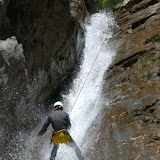
Nor is this change in mood confined to Kathmandu. In the most far-flung districts, people were glued to their radios on Thursday, witnessing the dismantling of ancient, feudalistic ties.
Parliament's foremost target has been the monarchy. The institution has received a battering; the king reduced to a figurehead and placed, in many ways, on the level of ordinary Nepalis.
Most strikingly, parliament has taken on the right to make and change laws regarding the royal succession - if, indeed, there is still a monarchy under the new constitution to be drawn up in due course by an elected assembly.
Spending controlled
This is a clear sign of the unpopularity of the heir apparent, Crown Prince Paras, a playboy infamous for his reckless driving.
The king - an extraordinarily rich monarch in an exceptionally poor country - is to be taxed and his spending controlled, while his acts will be open to scrutiny in court or in parliament.
Then there is the symbolism. Already, the expressions "His Majesty's Government of Nepal" and "Royal Nepalese Army" have been consigned to history.
The national anthem, whose first line reads "May glory crown you, courageous S
 overeign", is to be changed.
overeign", is to be changed.Maoist rebels have been fighting with government forces
Moves like this may slowly chip away at the deference usually accorded to the king, who hitherto has tended to commandeer Nepal's entire civil aviation fleet when travelling abroad and whose local visits in luxury limousines bring road traffic to a standstill for hours.
There is another kind of deference, too. Since before the Shah dynasty took power, kings here have been regarded as incarnations of the Hindu god, Vishnu. Many still believe this.
But factors such as the 2001 royal massacre have undermined the belief, and now parliament has abolished Nepal's status as a Hindu kingdom, making it secular.

Links severed
This move has long been wanted by many Nepalis in a country with a tradition of religious tolerance, where Hinduism and Buddhism coexist and freely mix.
The other institution being reined in is the army - now simply the Nepalese Army. Analysts point out that 15 months ago, the army went against the constitution by doing the bidding of the king, arresting the then prime minister and other leaders.
The military - the most powerful of the security force branches here - is now being placed more firmly under the cabinet and a newly constituted top body, and the monarch's link with it completely severed.

King Gyanendra's powers have been severely curtailed
Until Thursday, King Gyanendra - rather like the US president - was supreme commander of the army. That post no longer exists.
The signs are that, despite some consternation, the generals are going along with the change. Indeed, it was reportedly the army that told the king to make major concessions late last month.
But there's also a growing chorus demanding the dismissal of the current army chief, General Pyar Jung Thapa, given the military's role in suppressing last month's demonstrations and the fact that other security force chiefs have been sacked.
Another powerful organ of state, too, has been dissolved - the privy council, a powerful advisory body thought to have urged the king to take direct power last year.
'Inclusive' army
There are some small moves to address the concerns of Nepal's indigenous ethnic groups, who constitute some 40% of the population but have always been excluded from political power.
One is secularisation - a cause important to many indigenous people. It is also stated that the army - hitherto ruled by top Hindu castes - will now be "inclusive and national" in character.
Also marginalised in Nepal are two million stateless people living in areas bordering India: the new declaration says they will get citizenship.
The text mentions the "sacrifices" some people made during April's mass demonstrations against palace rule.
Indeed, underlying this whole proclamation is the sense that these are the changes the ordinary people want, and that the elected body - parliament - is sovereign.
Parliament must try and end Nepal's crushing poverty
It is being predicted that this sense - of the popular will - will prevent the king trying to challenge the new order. He has made no public pronouncement since retreating from direct rule on 24 April.
The politicians' next urgent move will be to address the question of peace. The Maoist rebels have already complained that the new declaration makes no mention of peace talks.
But, having moved quickly on the issue of royal powers, parliament is likely to return to the peace agenda soon.
Pressing problem
The monarchy's long-term future is unclear. There is a widespread sense here that - despite the growing republican sentiment in the streets - parliament has, for now, saved the institution from the man who seemed most likely to undermine it, namely King Gyanendra.
But all these new measures, radical as they are, may be superseded once a promised constituent assembly is elected.
And the fine words must be made into deeds. Apart from violence, Nepal has one most pressing problem: poverty.
As the Himalayan Times newspaper puts it: "Unless the [new] political power is exercised exclusively in the interest of the deprived and marginalised, the sacrifices of the martyrs will be in vain".
As Nepal's mainly peaceful revolution continues, plenty of Nepalis will keep reminding the politicians of that.

